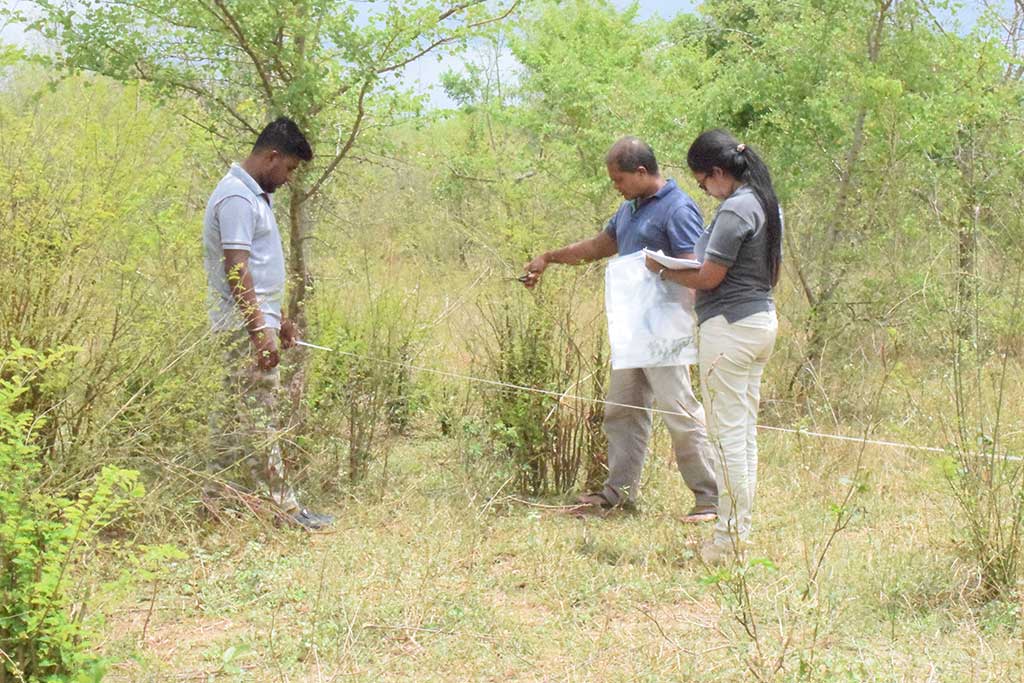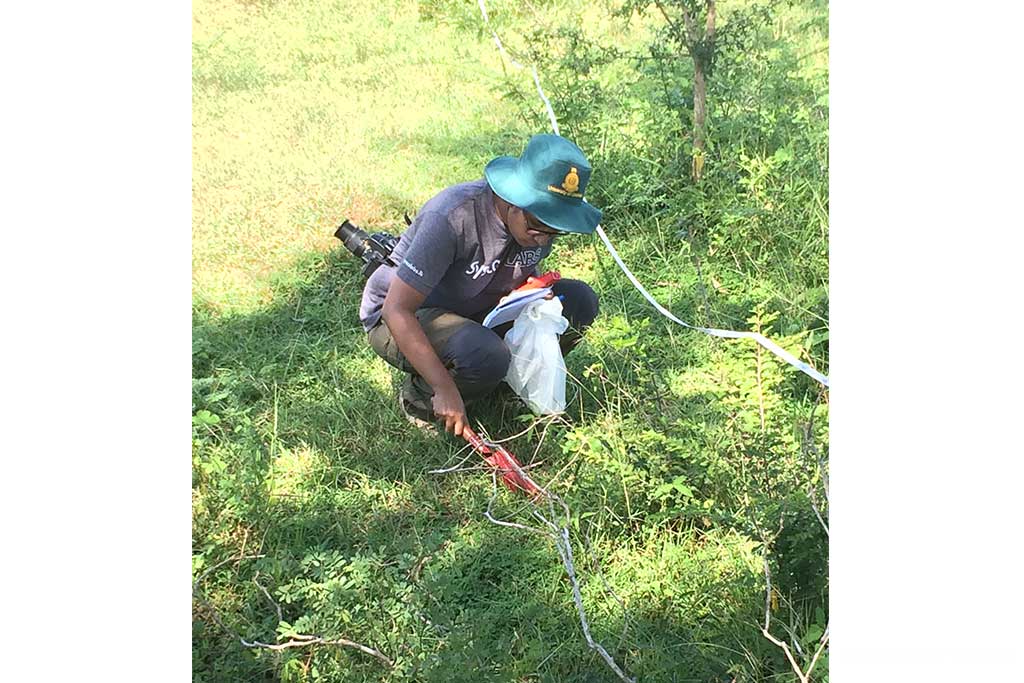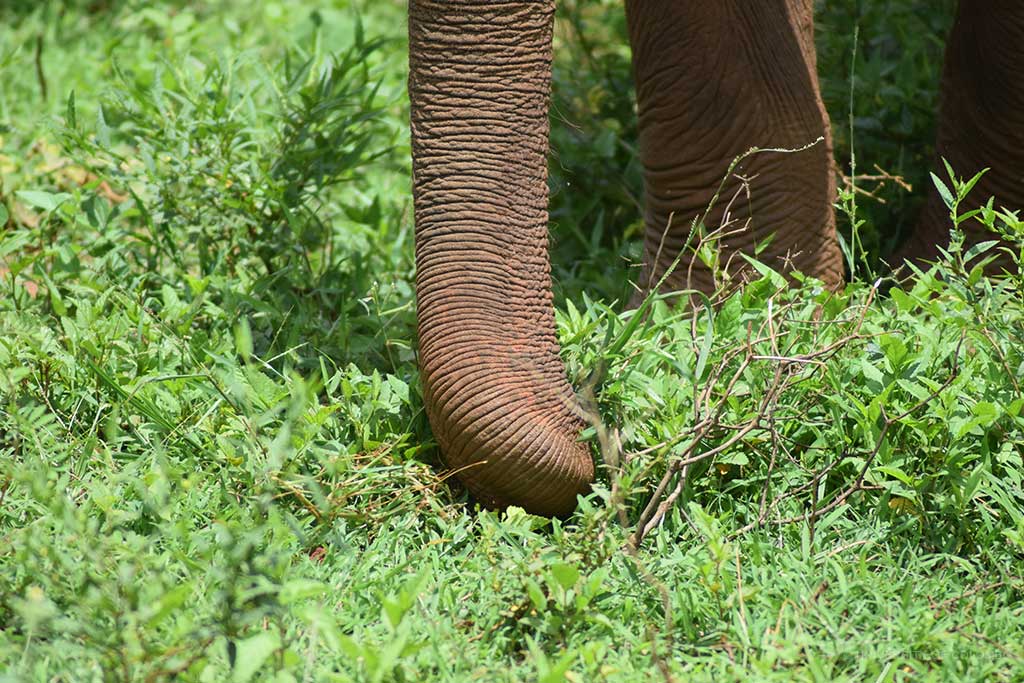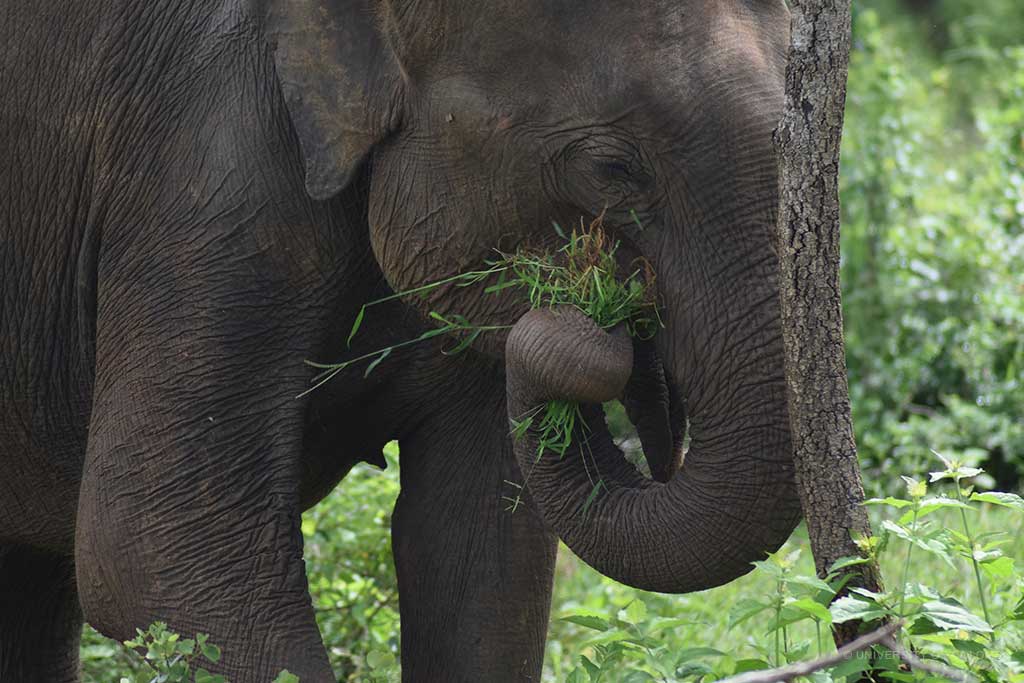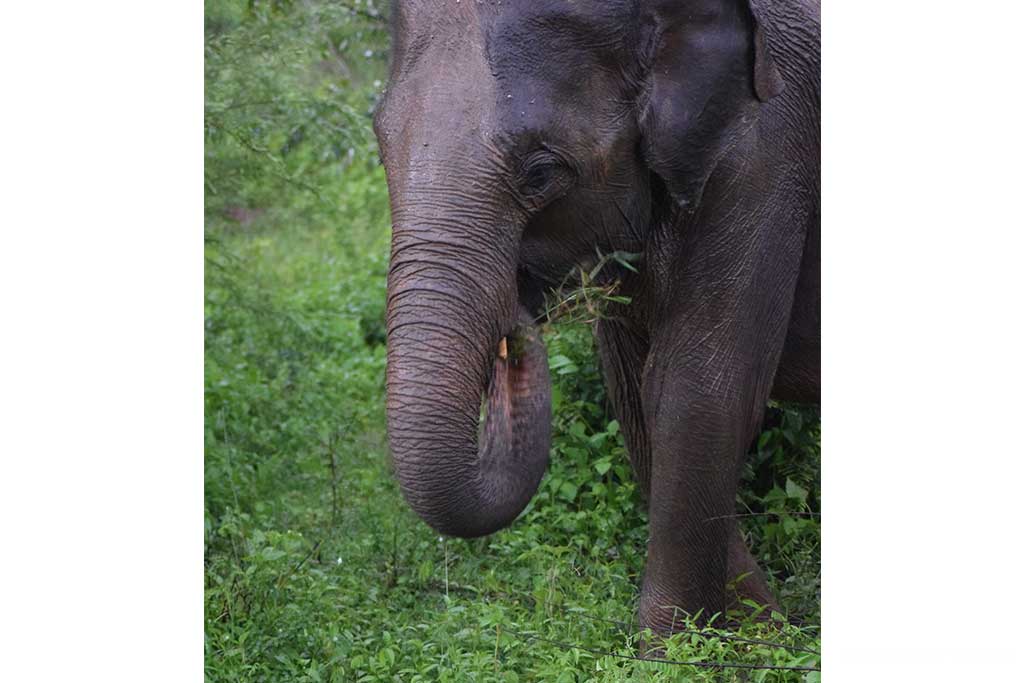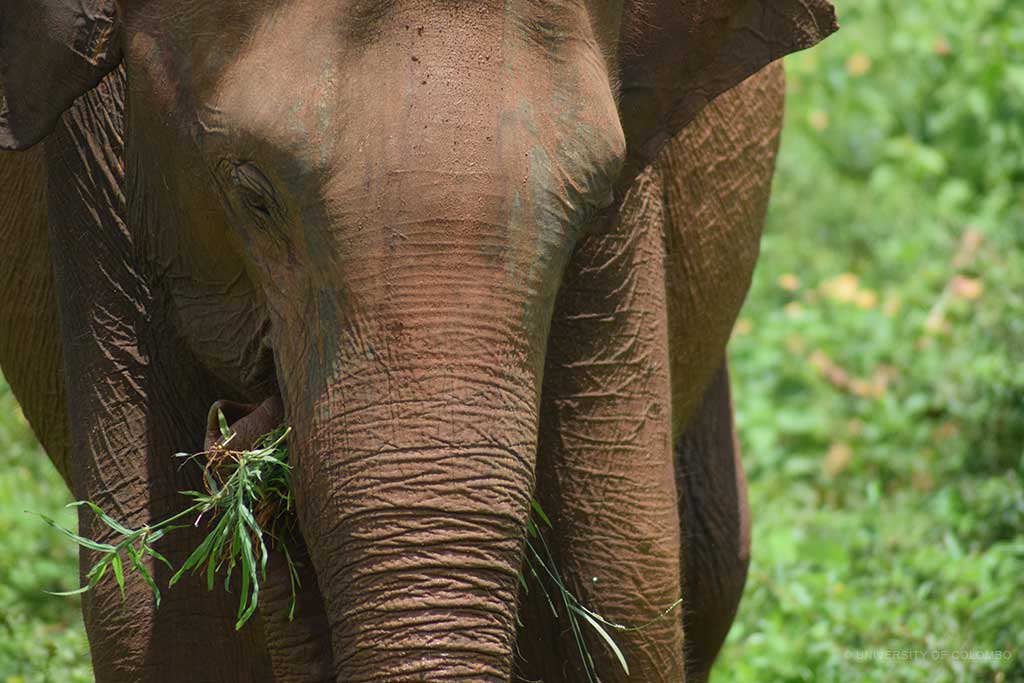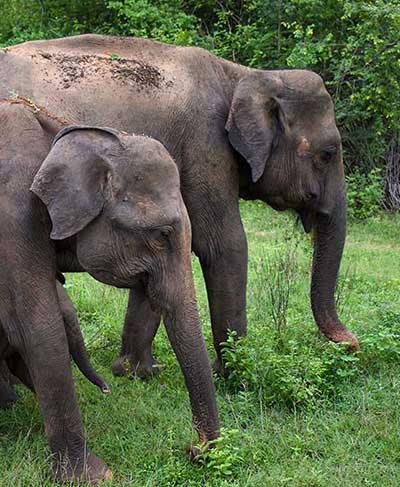
Proximate Nutrients in Selected Forage & Diet Composition of Adult Elephants
The thinning elephant population in Udawalawe National Park has been a growing cause for concern. Among the various proposed solutions to address this issue, one involves the regeneration of Guinea grass (M. maximum). Experts that have been observing the National Park, suggested a possible relationship between the decreased Guinea grass extent and the increasing observations of elephants with compromised physical conditions. Nevertheless, the grass is an invasive species, and it was important to assess its nutritional status as an elephant food plant before recommending it for Udawalawe National Park, although it was once largely of Guinea grasslands.
Hence, Professor Nihal Dayawansa from the Department of Zoology and Environment Science, Professor Dilrukshi Wijayarathna from the Department of Chemistry, and Ms Dinithi Hemachandra, a graduate from the Department of Zoology and Environment Science conducted a comparative study between several grasses including M.maximus and other food plants preferred by elephants at the National Park. The researchers identified the elephants’ most preferred food plants within the National Park by observing their feeding behaviour. They collected samples from the exact plants/patches that the elephants fed on for subsequent analysis.
The contentious Guinea grass was also included among the selected species to facilitate a comparative understanding of its significance. Fresh dung samples were collected from 26 adult elephants in situ out of the total of 509 elephants, whose body conditions were determined within the National Park. Consequently, the study facilitated a first-time analysis of the relationship between the age, gender, and body condition of elephants in relation to their dung composition, revealing intriguing socio-behavioural consequences in their food selection.
The study holds significance for several reasons:
- It marks the inaugural comparative nutritional analysis between various grasses and other elephant food plants in Sri Lanka.
- It represents the first endeavour to evaluate dung composition in identified wild elephants.
- Moreover, it stands as the pioneering attempt to investigate the correlation between dung composition and the gender of adult wild elephants.
The study’s outcomes, as revealed, offer valuable insights for wildlife management, including:
- Observations of gender-biased preferences for food plants among wild elephants.
- Evaluation of the nutritional contributions of grasses versus dicotyledonous elephant food plants.
- The notable absence of a relationship between the elephants’ body conditions and the types of food plants in their diets.
- Noteworthy lack of significant nutritional contribution from Guinea grass.
For more details, refer to the peer-reviewed Full Article published in the Journal of Threatened Taxa at:
https://doi.org/10.11609/jott.8416.15.7.23487-23498
